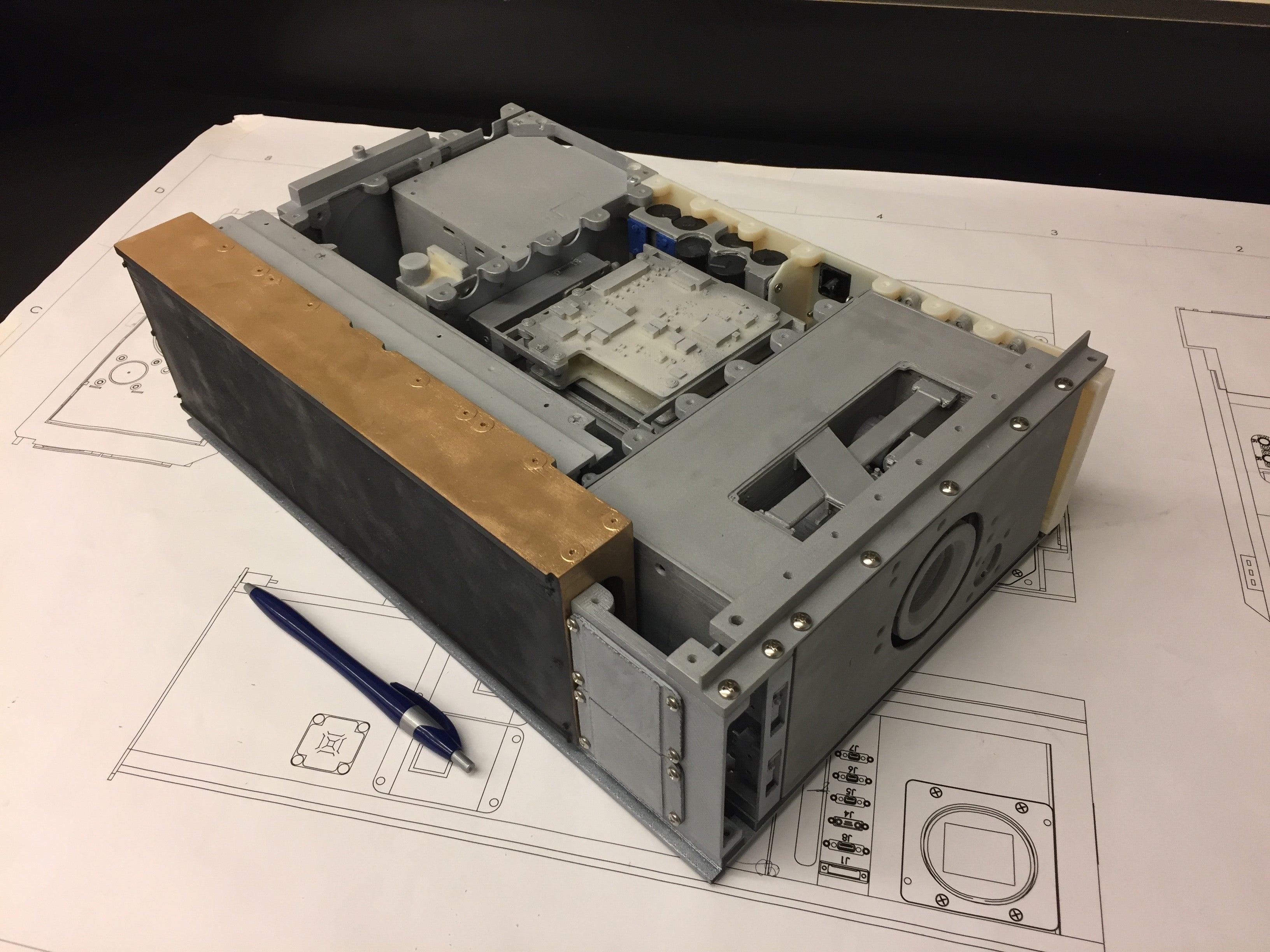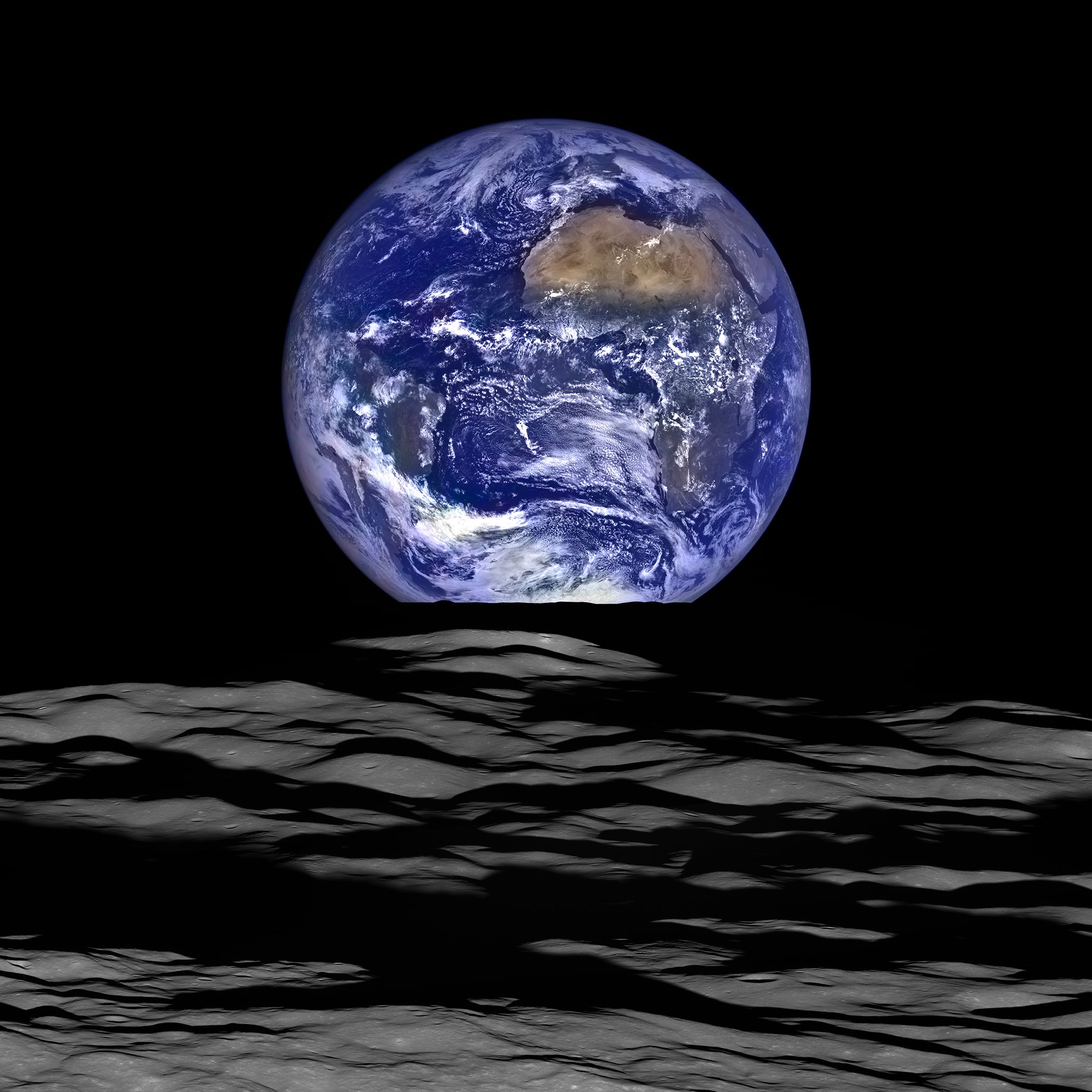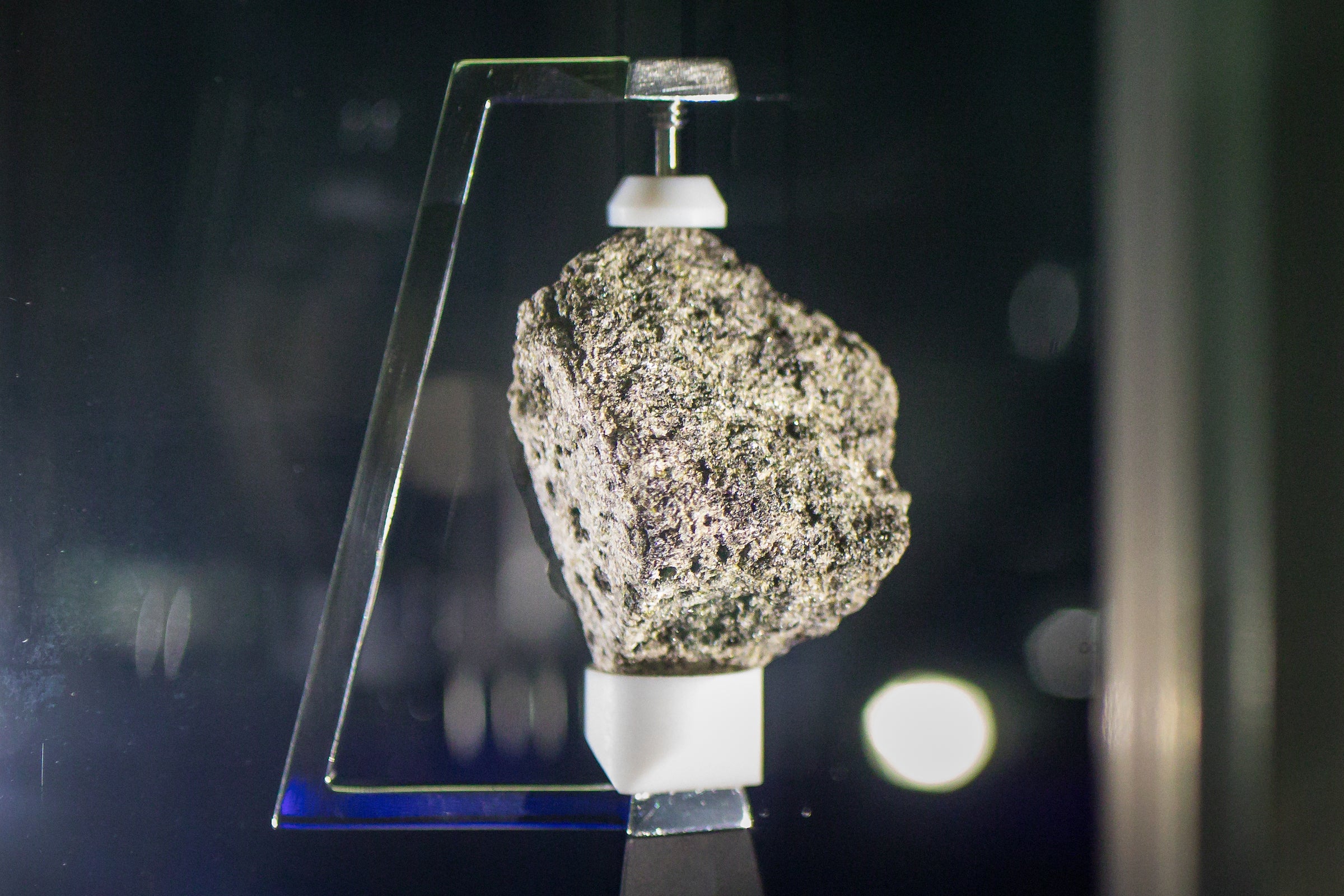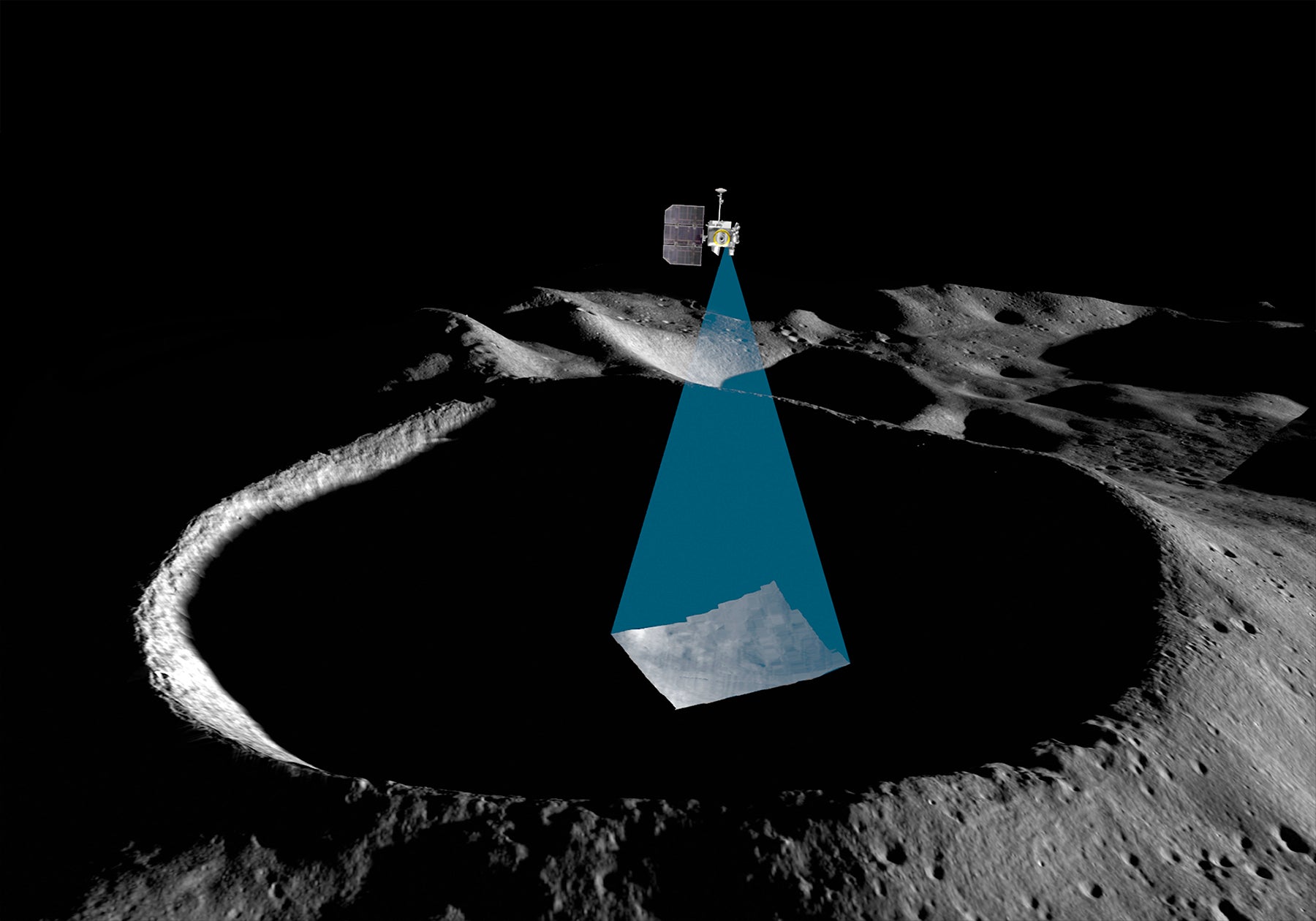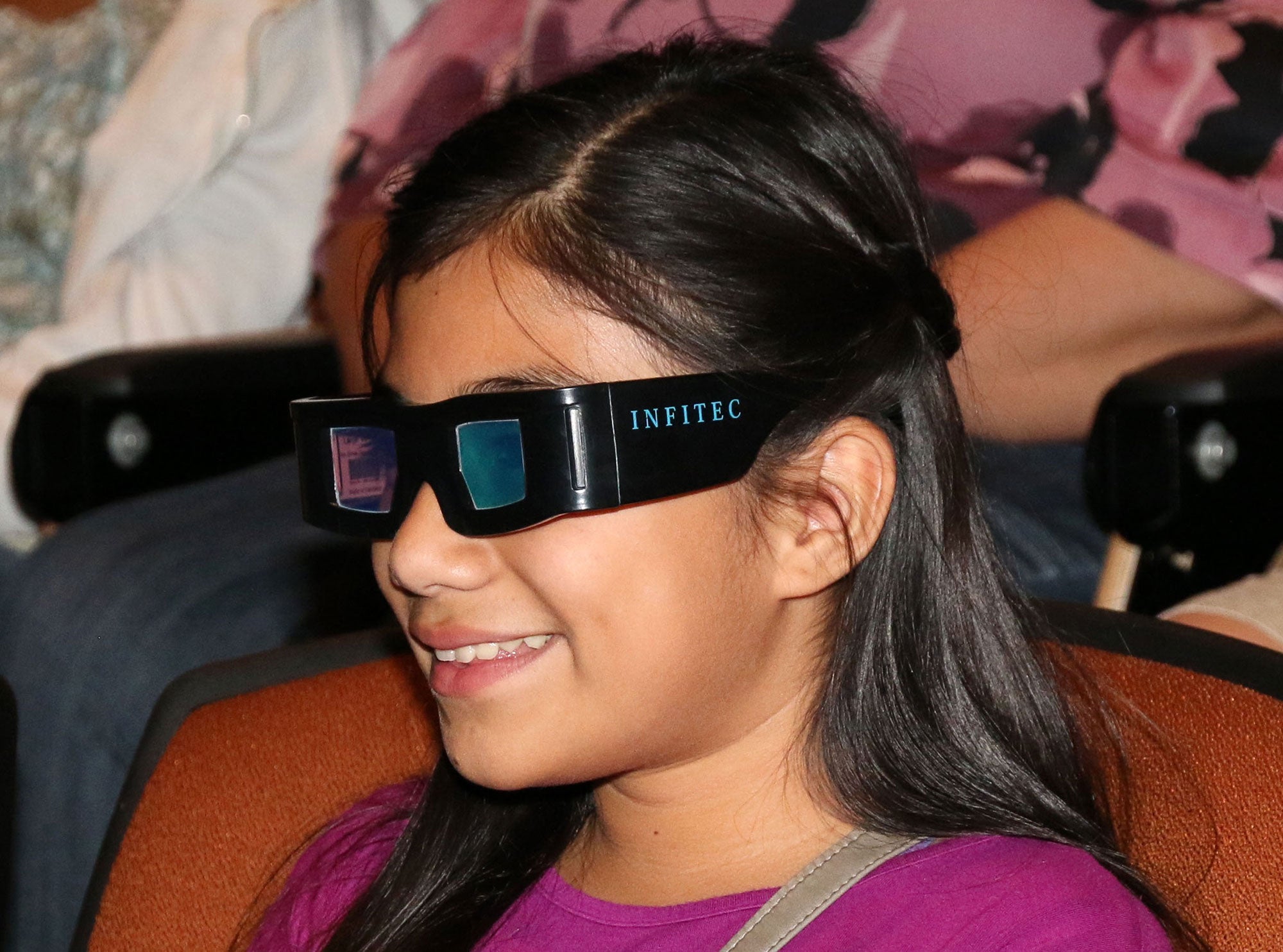One small step for man ... one giant reason to celebrate each year.
National Moon Day commemorates July 20, 1969, when Apollo 11 astronauts Neil Armstrong and Buzz Aldrin landed on the moon, the first humans to ever do so.
We suggest celebrating the day with some cheese, a 3D movie on campus and this moon melange of lunar excellence at Arizona State University.
One big step for a small satellite
For the NASA review, the ASU team made a full-size model of their spacecraft, the LunaH-Map, which will create a map of the moon's water deposits. Photo by Craig Hardgrove/ASU
LunaH-Map, ASU’s first exclusive NASA mission, passed a milestone in late June. The tiny spacecraft that will fly to the moonAssociated Press style is to lowercase "moon," though many scientists insist that as a proper noun, it should be capitalized. Discuss amongst yourselves. and hunt for ice next year successfully passed a major review. Science team members, partners, and hardware providers gathered at the Tempe campus with representatives from NASA headquarters.
“It was a great time to review the overall design as well as to meet many of the team members that we typically only hear on the phone,” said principal investigator Craig Hardgrove, a planetary scientist and assistant professor in the School of Earth and Space Exploration. “We are now working on finalizing our integration, test and operations plans as well as preparing lab spaces for our first flight hardware arrivals later this year.”
The mission launches in 2019. During this coming year, the spacecraft will be built, validation and qualification tests performed, and software tools written to operate the craft.
“It's a busy and fun time for us!” Hardgrove said. “The most surprising thing has been just how small our spacecraft is. For (the major review) we printed a full-size 3D model of our spacecraft. It really is the size of a shoebox!”
Face it, your Instagram will never be this cool
Apollo 17 Commander Eugene Cernan (left) and Command Module Pilot Ronald Evans take advantage of microgravity for a space portrait. At 12 days and 13 hours, this was the longest of the Apollo missions, leaving plenty of time for photos (and, you know, science stuff). Photo by NASA
It's not just the moon landing, commemorated by National Moon Day, that's so exciting for us Earthbound mortals; it's also the glimpse into the missions that led up to that and what life was like for those astronauts.
If that's your bag, you're in luck: The March to the Moon website, tothemoon.ser.asu.edu, hosts scores of photographs (like the one above) and information from Projects Mercury, Gemini and Apollo. The Lyndon B. Johnson Space Center was involved in scanning the images, which range from lunar surfaces to crew members brushing their teeth and shaving.
Here's a hint: There are a lot of photos on the site. Once you're in a particular mission, keep clicking through the first sometimes-fuzzy frames; we promise it will be worth it.
Speaking of photos ... this one? ASU cameras shot it, and thousands more
A full Earth straddles the edge of the moon, as seen from lunar orbit above Compton crater in the foreground. On Earth, Africa is visible at center right, and South America can be glimpsed through clouds at left. Photo by NASA/GSFC/ASU
This gorgeous Earthrise photo, with a cratered moon in the foreground, was taken in October 2015 by the Lunar Reconnaissance Orbiter using onboard cameras operated by ASU. It's one of thousands of images on the Lunar Reconnaissance Orbiter Camera (LROC) website curated by the team headed by Mark Robinson, a professor in the School of Earth and Space Exploration.
The images are both scientific and artistic, no small feat when your cameras are moving at more than 3,580 miles an hourThe manuever involved the spacecraft rolling 67 degrees to the side and then slewing with the direction of travel to maximize the width of the horizon — while traveling faster than 3,580 miles per hour. Then there's a bit of special processing needed, in which the information is combined from both the high-resolution Narrow Angle Camera (NAC, which takes black-and-white images) and the lower-resolution Wide Angle Camera (WAC, which does color).. Tom Watters, curator of a 2016 Smithsonian Museum exhibit that featured 61 LROC images at the National Air and Space Museum in Washington, D.C., called Robinson “the Rembrandt of capturing just the right kind of lighting.”
Robinson, whose first college degree was a double major in political science and fine-art photography, sees the moon as “this beautiful little world.”
“It’s not just a romantic silver disc you see in the sky at night; it’s a world in its own right,” the LROC principal investigator said in a story about the Smithsonian exhibit. “And it’s somewhere we should be going back to.”
It's beautiful — and always changing. More than 200 new craters have been imaged since the LRO started orbiting. Explore images of its changing surface — including the jarred image from October 2014 when one of the cameras was hit by a meteroid — at the LROC website at lroc.sese.asu.edu. Among the site's many features are interactive maps of the Apollo landing sites.
A piece of moon history, right here in Tempe
A golf-ball-size piece of the moon is on display at the LROC Science Operations Center's Visitor Gallery, in the Interdisciplinary A building on ASU's Tempe campus. Photo by Charlie Leight/ASU Now
In an unassuming brick building on ASU's Tempe campus lies the LROC Science Operations Center. There, Mark Robinson's hardworking team of individuals process and curate the thousands of photos from the lunar cameras. An image collection that, quite frankly, rocks.
But in the public lobby just outside the team's glassed-in workspace in Interdisciplinary A, there's something else that rocks: an actual stone from the lunar surface.
The rock, on a long-term loan to ASU from NASA, weighs 2.7 ounces and is part of a 21-pound lunar rock (Sample 15555) collected by the Apollo 15 astronauts on Aug. 2, 1971. Informally named after its collector, astronaut Dave Scott, the “Great Scott” rock was picked up about 13 yards north of the rim of Hadley Rille.
It is part of the 842 pounds of lunar samples collected during six Apollo missions. By studying certain radioactive elements in the Apollo samples, scientists determined that the moon is 4.5 billion years old.
So next time it feels like a certain class is lasting forever, swing by to check outIf you're in the mood for even more space rocks, the meteorite gallery at the ASU Center for Meteorite Studies is free and open to the public for self-guided tours from 9 a.m. to 5 p.m. Mondays through Fridays on the second floor of ISTB4 on the Tempe campus. the rock — and gain some cosmic perspective.
Into the shadows
The ShadowCam instrument will acquire images of shadowed regions of the moon using a high-resolution camera, telescope, and highly sensitive sensors. Image by ASU/Malin Space Science Systems
Professor Mark Robinson, the LROC maestro, is involved in another lunar mission; if we were punsters, we might say he must be over the moon about it.
NASA has selected an instrument developed by him and Malin Space Science Systems (MSSS) to map the terrain and search for evidence of frost or ice deposits in the moon’s permanently shadowed regions (PSRs).
The instrument, named ShadowCam, will be a U.S. contribution to the Korea Aerospace Research Institute’s first lunar exploration mission, Korea Pathfinder Lunar Orbiter. Robinson will be the ShadowCam's principal investigator.
The ShadowCam optical camera is based on the Lunar Reconnaissance Orbiter Narrow Angle Camera also developed by Robinson and MSSS. It is, however, significantly more sensitive, allowing the camera to obtain high-resolution, high signal-to-noise imaging of the moon’s PSRs. For those familiar with digital cameras, this sensitivity gain is like going from ISO 100 to ISO 80,000. That's quite the upgrade.
Plus, ShadowCam gets our vote for coolest instrument name (best pronounced in a Batman voice).
Silver orb on the silver screen
OK, so it's not like actually being in space. But the 3D astronomy shows at Marston Theater on the Tempe campus make for some pretty far-out fun. Photo by School of Earth and Space Exploration
Admit it. Movies are just cooler when you get to wear funny glasses to watch them.
"The Moon Revealed" is a 3D show that looks at the moon from the perspective of history, missions and culture, including the latest research from ASU’s Lunar Reconnaissance Orbiter Camera, revealing secrets of our nearest celestial neighbor.
It is among a handful of 3D astronomy-themed shows shown at the Marston Theater of Exploration on the Tempe campus. For more information and to purchase tickets, visit sese.asu.edu/public-engagement/3-d-astronomy.
The Marston Exploration Theater is in the Interdisciplinary Science and Technology Building IV. The theater employs Definiti SkySkan Planetarium technology utilizing 4K projection systems that render Earth and Space Science themes in 3D stereographic vision.
Maybe we'll book rooms with Air(&Space)bnb
And finally, Jim Bell, professor in the School of Earth and Space Exploration and director of the NewSpace Initiative, talks about why deep space is the new economic frontier — and whether a weekend on the moon is around the corner.
Video from the ASU KEDtalks series.
Scott Seckel, Charlie Leight, Karin Valentine, Keri Hensley and Penny Walker contributed to this report. Top photo: The moon photographed by the Lunar Reconnaissance Orbiter Camera team at ASU. Photo by NASA/GSFC/Arizona State University
More Science and technology

ASU postdoctoral researcher leads initiative to support graduate student mental health
Olivia Davis had firsthand experience with anxiety and OCD before she entered grad school. Then, during the pandemic and as a result of the growing pressures of the graduate school environment, she…

ASU graduate student researching interplay between family dynamics, ADHD
The symptoms of attention deficit hyperactivity disorder (ADHD) — which include daydreaming, making careless mistakes or taking risks, having a hard time resisting temptation, difficulty getting…

Will this antibiotic work? ASU scientists develop rapid bacterial tests
Bacteria multiply at an astonishing rate, sometimes doubling in number in under four minutes. Imagine a doctor faced with a patient showing severe signs of infection. As they sift through test…

